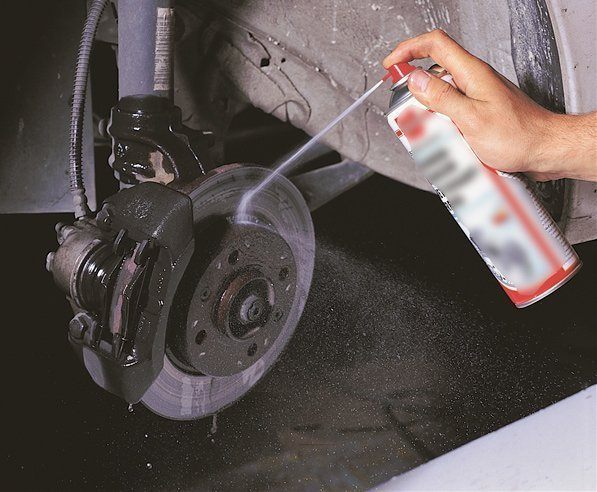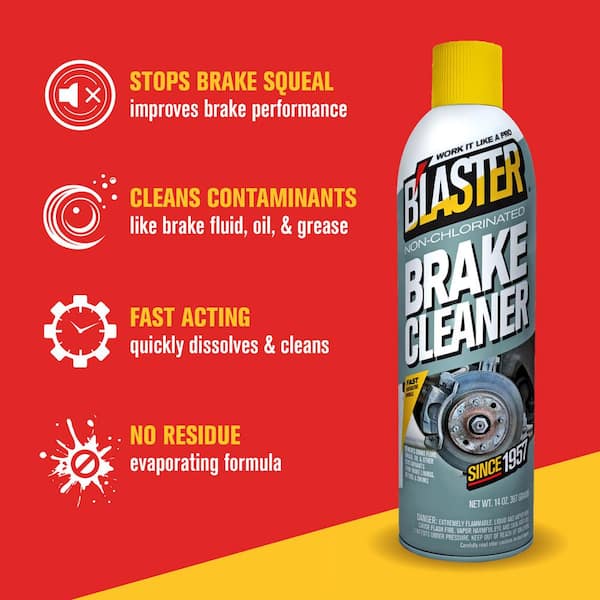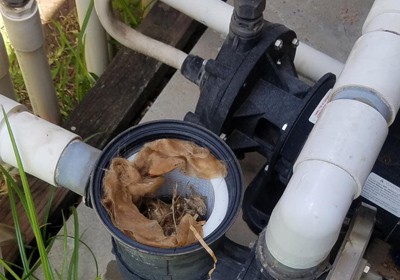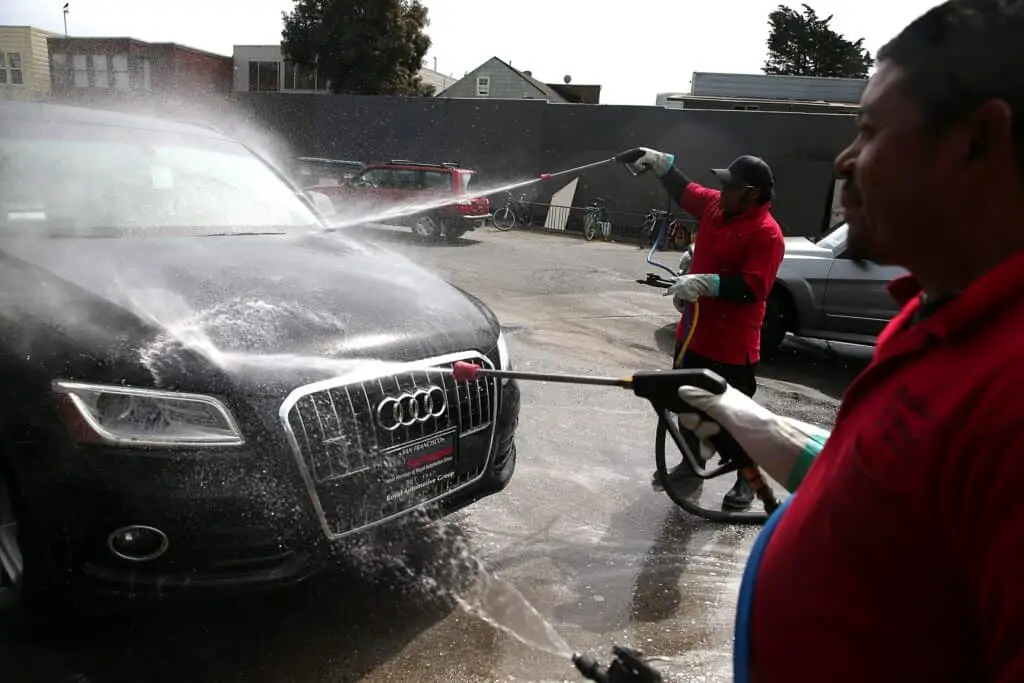Brake cleaner is a powerful solution used in automotive maintenance. But, can it remove paint?
The short answer is yes, brake cleaner can remove paint. This potent chemical is designed to clean brake parts, but its strong formula can strip paint off surfaces. Understanding how brake cleaner interacts with paint is crucial. This knowledge helps prevent accidental damage when working on your vehicle.
In this post, we’ll explore the reasons brake cleaner can remove paint and how to use it carefully. We’ll also discuss safer alternatives for paint removal. Whether you’re a car enthusiast or a DIYer, knowing the effects of brake cleaner can save you time and money. Let’s dive deeper into this topic and understand the impact of brake cleaner on paint.

Credit: fuelandfriction.com
Introduction To Brake Cleaner
Brake cleaner is a common product used in automotive maintenance. It helps clean brake components effectively. But many people wonder about its effects on paint. Can brake cleaner remove paint? Let’s dive into understanding brake cleaner and its uses.
What Is Brake Cleaner?
Brake cleaner is a solvent-based product. It’s designed to clean brake parts. It removes grease, oil, brake fluid, and other contaminants. Brake cleaner dries quickly, leaving no residue. It comes in aerosol cans for easy application. There are two main types: chlorinated and non-chlorinated. Chlorinated cleaners contain chemicals like tetrachloroethylene. Non-chlorinated cleaners use substances such as heptane or acetone.
Common Uses Of Brake Cleaner
Brake cleaner is mainly used for cleaning brake components. This includes brake drums, calipers, and brake discs. Mechanics use it to remove brake dust and grime. It’s also useful for cleaning other metal parts. Brake cleaner can help in degreasing small engine parts. It evaporates quickly, reducing downtime during repairs. Some people use it for cleaning tools or work surfaces. But caution is needed as it can damage paint and plastics.
Composition Of Brake Cleaner
Brake cleaner is a powerful solvent. It is used to remove grease, oil, and other contaminants from brake components. Understanding its composition is important. This helps you know if it can also remove paint.
Chemical Ingredients
Brake cleaners are made of various chemicals. These chemicals give them their cleaning power. Here are some common ingredients:
- Acetone: A strong solvent that can dissolve many materials.
- Toluene: Effective in breaking down oils and grease.
- Methanol: Used for its quick evaporation properties.
- Ethylbenzene: Works well in dissolving resins and other tough substances.
These ingredients can be very harsh. They can strip away paint from surfaces. Use caution when applying brake cleaner near painted areas.
Types Of Brake Cleaners
There are two main types of brake cleaners: chlorinated and non-chlorinated. Each type has different properties.
| Type | Characteristics |
|---|---|
| Chlorinated | Contains solvents like tetrachloroethylene. Very effective but more toxic. |
| Non-chlorinated | Uses solvents like acetone and heptane. Safer but less powerful. |
Chlorinated cleaners are very effective. They are also more harmful to the environment and human health. Non-chlorinated cleaners are safer. But they may not clean as well.
Effects On Paint
Brake cleaner is a powerful solvent used to clean brake parts. But, does it affect your car’s paint? Knowing the potential effects on your vehicle’s paint can help you avoid unwanted damage.
Chemical Reaction With Paint
Brake cleaner contains strong chemicals. These chemicals can react with paint. This reaction can cause the paint to soften. Soft paint can peel or chip easily.
Some brake cleaners are harsher. They contain acetone or other strong solvents. These can strip paint quickly. Even a small amount can cause damage. Always check the label of the brake cleaner.
Factors Influencing Paint Removal
The type of paint matters. Older paint may be more vulnerable. Newer, high-quality paints may resist damage better.
The duration of exposure is crucial. Longer exposure increases the risk. Even a few minutes can be enough.
The method of application plays a role. Spraying directly on the paint can cause more damage. Wiping it off immediately can reduce harm.
Temperature can also influence the effect. High temperatures can speed up the reaction. This makes the paint more likely to get damaged.
Considering these factors can help you protect your car’s paint. Use brake cleaner with caution. Always follow safety guidelines. Your car’s paint will thank you.

Credit: gtechniq.com
Testing Brake Cleaner On Paint
Brake cleaner is a powerful solvent. It can remove grease, grime, and other contaminants. But does brake cleaner remove paint? To find out, you must test it on a small area first. This ensures that you won’t cause any damage to your vehicle’s paint job.
Small Area Test
Begin by selecting an inconspicuous spot on your vehicle. This could be under the hood or near the wheel well. Spray a small amount of brake cleaner onto a cloth. Gently dab it on the test spot. Do not rub, as this could spread any damage.
Observing Changes
After applying the brake cleaner, observe the spot for any changes. Look for signs of paint removal or discoloration. If you notice any changes, stop using the brake cleaner immediately.
If there are no changes, you can proceed with caution. Always use brake cleaner sparingly and follow the manufacturer’s instructions. This helps to prevent damage to your vehicle’s paint.
Alternatives To Brake Cleaner
If you are looking for safer alternatives to brake cleaner for paint removal, there are many options. Brake cleaner can be harsh and damage surfaces. Consider these safer and more effective methods instead.
Safer Options For Paint Removal
Several commercial products are designed to remove paint without causing harm. These products are often less toxic and safer to use.
- Citrus-based paint removers: These are eco-friendly and non-toxic. They work well for removing paint without harsh chemicals.
- Soy-based paint removers: Made from natural soybeans, these removers are gentle yet effective.
- Water-based paint removers: These are less harmful to the environment and your health.
Diy Solutions
For those who prefer homemade solutions, there are several DIY methods. These can be made with common household items.
- Baking soda and water: Mix baking soda with water to form a paste. Apply it to the paint and let it sit for a few minutes. Scrub with a brush to remove the paint.
- Vinegar: Heat a small amount of vinegar and apply it to the paint. Wait a few minutes, then scrub away the paint with a cloth or brush.
- Rubbing alcohol: Soak a cloth in rubbing alcohol and apply it to the paint. Rub gently until the paint starts to lift.
These DIY solutions are safe and effective for small paint removal tasks. They are also inexpensive and easy to make.
| Method | Materials Needed | Effectiveness |
|---|---|---|
| Citrus-based paint removers | Citrus-based solution | High |
| Soy-based paint removers | Soy-based solution | Medium |
| Water-based paint removers | Water-based solution | High |
| Baking soda and water | Baking soda, water | Medium |
| Vinegar | Vinegar | Medium |
| Rubbing alcohol | Rubbing alcohol | Low |
Safety Precautions
Using brake cleaner near painted surfaces can be risky. It is important to follow safety precautions to protect yourself and your surroundings. This guide will cover key safety measures.
Protective Gear
Always wear protective gear when handling brake cleaner. This includes:
- Gloves to protect your hands from chemicals.
- A face mask to avoid inhaling fumes.
- Safety goggles to shield your eyes.
- Protective clothing to cover exposed skin.
These items reduce the risk of chemical burns and inhalation problems.
Ventilation Requirements
Ensure proper ventilation when using brake cleaner. The fumes can be harmful.
- Work in a well-ventilated area.
- Open windows and doors to allow air circulation.
- Use fans to expel fumes from the workspace.
Good ventilation helps to disperse toxic fumes quickly. This reduces the risk of inhalation and health issues.
Proper Usage
Using brake cleaner can be effective for many cleaning tasks, but it is crucial to use it properly. This guide will help you understand the best methods for using brake cleaner without damaging paint. Follow these steps to ensure you use brake cleaner safely and effectively.
Application Techniques
When applying brake cleaner, always use it in a well-ventilated area. Wear gloves and safety glasses to protect your skin and eyes. Here are some steps to follow:
- Shake the can well before use.
- Hold the can 6-12 inches away from the surface.
- Spray in short bursts to avoid over-application.
- Wipe off any excess cleaner immediately with a clean cloth.
Using these techniques will help you get the most out of your brake cleaner without risking paint damage.
Avoiding Paint Damage
Brake cleaner can be harsh on paint if not used correctly. To avoid damaging paint, consider these tips:
- Test the cleaner on a small, hidden area first.
- Do not let the cleaner sit on the paint for too long.
- Wipe off the cleaner quickly and thoroughly.
- Use a mild soap and water to clean the area afterward.
Following these steps will help you maintain the integrity of the paint while still benefiting from the powerful cleaning properties of brake cleaner.

Credit: www.homedepot.com
Environmental Impact
Brake cleaner is a powerful solvent commonly used to clean brake components. While effective, its environmental impact is often overlooked. This section delves into the environmental consequences of using brake cleaner, focusing on how to dispose of it properly and exploring eco-friendly alternatives.
Disposal Of Brake Cleaner
Proper disposal of brake cleaner is crucial. Incorrect disposal can harm the environment. Brake cleaner contains chemicals that are hazardous to both soil and water. Follow these steps to dispose of brake cleaner responsibly:
- Always wear protective gloves and eyewear.
- Do not pour brake cleaner down the drain or into the soil.
- Store used brake cleaner in a sealed container.
- Take it to a local hazardous waste disposal facility.
Many communities have specific guidelines for disposing of hazardous waste. Check with your local waste management services for detailed instructions.
Eco-friendly Alternatives
Switching to eco-friendly alternatives can reduce the environmental impact. Several options are available that are both effective and less harmful to the environment:
| Eco-friendly Product | Description |
|---|---|
| Water-based Cleaners | Non-toxic and biodegradable. |
| Plant-based Solvents | Derived from natural sources, safe for the environment. |
| Vapor Degreasers | Efficient and use less solvent. |
Choosing eco-friendly products not only helps the environment but also promotes a safer workspace. Using these alternatives can make a significant difference. Consider making the switch today.
Frequently Asked Questions
Can Brake Cleaner Damage Car Paint?
Yes, brake cleaner can damage car paint. It contains strong chemicals that can strip paint.
Is Brake Cleaner Safe For All Surfaces?
No, brake cleaner is not safe for all surfaces. It can damage paint, plastic, and rubber.
What Should I Use To Clean Brakes?
Use a dedicated brake cleaner. It’s designed specifically for cleaning brake components without causing damage.
Can Brake Cleaner Remove Grease And Oil?
Yes, brake cleaner effectively removes grease and oil. It’s formulated to dissolve these substances quickly.
Conclusion
Brake cleaner can remove paint, but it’s not recommended. It damages surfaces. Use dedicated paint removers for the best results. They protect the underlying material. Always test a small area first. This ensures no unexpected damage. Follow safety instructions carefully.
Proper ventilation is crucial. Wear gloves and eye protection. This keeps you safe from harmful chemicals. Make informed choices for better outcomes.


